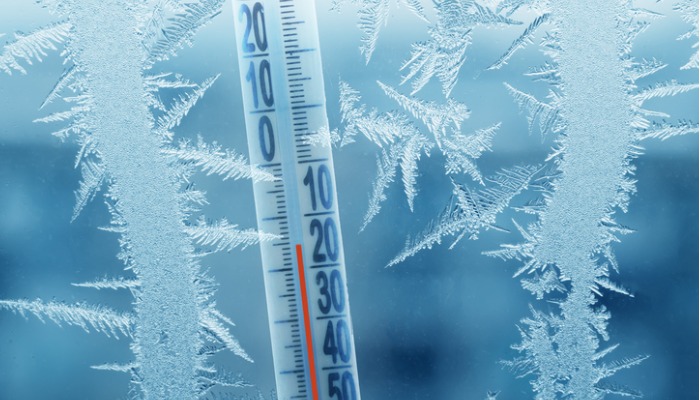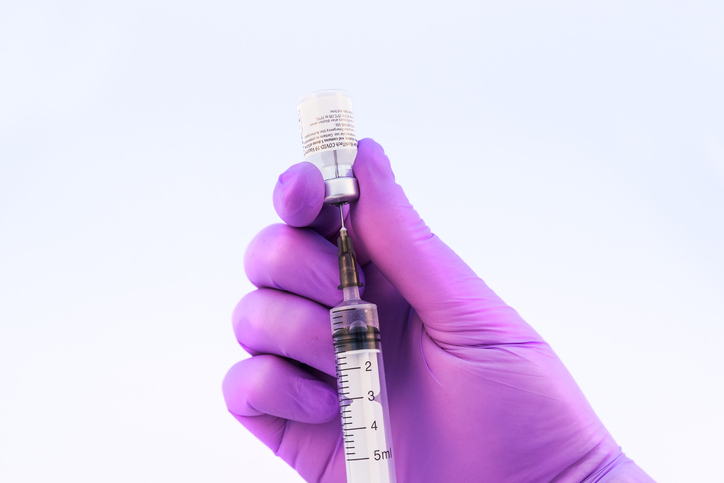Cold chain - a matter of control
In Running Your Business
Follow this topic
Bookmark
Record learning outcomes

Effective cold chain management has been a crucial part of the Covid-19 vaccination programmes. The Pfizer and Moderna vaccines need to be stored in ultra-low temperature (ULT) freezers before they are thawed (-80°C to -60°C for Pfizer and -25°C to -15°C for Moderna), while the AstraZeneca and Johnson & Johnson vaccines can be stored in a refrigerator at 2°C to 8°C.
Keeping medicines and vaccines at such low temperatures involves significantly more organisation than putting them in a fridge and shutting the door until they need to be used – especially in non-healthcare settings, which have been used extensively during the pandemic.
“With the Covid vaccinations, the impact of suddenly having to use a sports hall, football stadium, shopping centre, church or a community centre was an eye opener,” says Mike Hobby, healthcare transformation partner at Cambridge-based CheckIt, which offers digital solutions designed to optimise organisational performance. “Comprehending the degree of control required, especially temperature control, and how to move vaccines needing to be kept at such a low temperatures and what to do if they defrosted… CheckIt has been working with pharmacies and other healthcare settings to roll out solutions.”
Essential standards
Patient safety is, of course, a priority for manufacturers, wholesalers, distributors and healthcare professionals administering medicines, including vaccines, to patients. The General Pharmaceutical Council (GPhC) Standards for Registered Pharmacies standard 4.3 states: “The management of medicines includes arrangements for obtaining, keeping, handling, using and supplying medicinal products and medical devices, as well as security and waste management. Medicines and medical devices are not ordinary commercial items. The way they are managed is fundamental to ensuring the health, safety and wellbeing of patients and the public who receive pharmacy services.”
According to the Medicines and Healthcare products Regulatory Agency (MHRA), Good Distribution Practice (GDP) is the minimum standard a manufacturer or wholesaler must meet when storing and transporting medicines. “GDP relates to essential practices that maintain quality, safety and efficacy of medicines during distribution,” says an MHRA spokesperson. “The wholesale supply chain extends through the chain of manufacturers and wholesalers to delivery to healthcare establishments such as pharmacies.”
Medicines manufacturers and wholesalers must meet GDP standards as a regulatory requirement incorporated in the Human Medicines Regulations 2012 and the EU’s guidelines on Good Distribution Practice (GDP) of medicinal products for human use. These provide assurance that medicines are consistently stored, transported and handled under suitable conditions. The GDP guidelines include chapters on premises and equipment, as well as transport, which state how temperature sensitive (cold chain) medicines should be stored and transported. The MHRA has also published specific information on the transport, receipt and storage of medicinal products on its Inspectorate blog.
the impact of suddenly having to use a sports hall, football stadium, shopping centre, church or a community centre was an eye opener
When cold chain products are delivered, they should be checked straight away as a priority and placed in a pharmaceutical fridge or freezer. The air inside pharmaceutical refrigerators is circulated by a fan, which provides a uniform temperature. The MHRA stresses that refrigerators containing medicinal products must not be used to store food, drink or anything that might contaminate them.
“In our pharmacies where we are providing Covid vaccinations, in some cases, we have needed additional fridge space,” says an AAH spokesperson. “We have had the option to order fridges from the NHS as part of the set up, but we have avoided attributing this cost. The challenge is always space in pharmacy and if an additional fridge is required, where do you put it? The other challenge with Covid is the set up of vaccines (reconstitution), so in some places, space has had to be found in the dispensary.”
The NHS Special Pharmacy Service published information on the cold chain management of Covid-19 vaccines in March 2021, and further information about using vaccines in hot weather in June. Organisations must prevent deviations in refrigerated storage temperature and ensure that vaccines are used within their individual requirements. The Green Book and the PHE Vaccine Incident Guidance state that immunisation providers should have a named individual responsible for vaccine storage as well as policies, protocols and procedures for the maintenance of the vaccine cold chain. These should, at their simplest, include:
- How to set up a new fridge, including temperature range
- How to routinely maintain and monitor the fridge
- Maintaining the cold chain during transportation
- How to handle any incidents that occur.
The NPA’s advice on cold chain product storage says:
- Fridges should be placed in a way that enables the door to automatically close if left open
- The fridge’s on/off switch and plug must be clearly marked to prevent them being accidentally switched off
- There must be sufficient space between cold chain items within the fridge to allow air to circulate (ideally, fridges should be fan operated)
- Different types of fridge lines should be stored in designated sections for ease of recognition
- Items with shorter expiry dates should be placed in front of others and dispensed first, as appropriate
- All items must be date checked on a regular basis, as per pharmacy procedures
- All medicines, including cold chain items, must be stored securely, where they won’t be accessible to unauthorised personnel
- Fridges must not be situated near radiators, heat sources or direct sunlight, and the surrounding area should be adequately ventilated
- Cold chain items should not be placed directly against the cooling plate, the sides or back of the fridge so that they don’t freeze.
According to the MHRA, temperature monitoring should be recorded by a calibrated electronic min/max thermometer (accurate to ±0.5°C) that can be read without opening the fridge door. When purchasing a new refrigerator, factors to consider include how long it can maintain the required temperature if the power is turned off and how much the temperature is affected by external ambient temperature variation, for example, in hot spells.
use purpose-built temperature sensors that click on the side of a fridge and door sensors to make sure the door is shut properly
The NHS Special Pharmacy Service stresses that during the summer, there is an increased risk of temperatures in ambient areas rising above 25°C (the maximum permissible storage temperature for all the Covid-19 vaccines authorised in the UK). This is particularly likely in venues that are susceptible to fluctuations in temperature, such as vehicles, marquees, tents and some local community facilities.
Wireless remote-monitoring devices, such as RemoteM and CheckIt, are simple to set up and use. They can log fridge or freezer temperature, humidity and door closure data at regular intervals, 24/7, and send this information to the cloud for safe storage. If a problem, such as a power cut, affects the temperature, an immediate SMS, email and/or voice call notification is sent to designated individuals – which is especially useful out of hours.
Mr Hobby says community pharmacies can use this type of monitoring system for no more than the cost of a mobile phone contract. “Invest in medicine fridges with access points for sensors,” he says. “Pharmacies can use purpose-built temperature sensors that click on the side of a fridge and door sensors to make sure the fridge door is shut properly. The whole system is very well controlled, with servers backed up regularly and data stored securely.”
The Pfizer vaccine: a steep learning curve
 AAH Pharmaceuticals has significant experience and expertise in storing and distributing cold chain medicines at temperatures from 2°C to 8°C. However, it was very much a learning process when the company initially partnered with NHS England to help distribute the Pfizer vaccine.
AAH Pharmaceuticals has significant experience and expertise in storing and distributing cold chain medicines at temperatures from 2°C to 8°C. However, it was very much a learning process when the company initially partnered with NHS England to help distribute the Pfizer vaccine.
“We had to review and create a new process for receipting ultra-low temperature (ULT) freezer products,” says an AAH spokesperson. “There were challenges with getting stock out of despatch packaging and into a ULT freezer until it was required for picking and delivery. We have managed this by introducing a change to the check-in process for stock bound for the ULT freezers, using three colleagues to check in inbound orders.
“The first colleague handles the packaging and product by removing the dry ice and removing the stock. The second colleague completes the warehouse control system process for checking the stock onto the system. We complete it this way due to the health and safety equipment the first colleague must wear for handling dry ice and putting stock into the ULT freezers. The third colleague monitors how long the doors are open and how long the product has been out of the delivery packaging to ensure we don’t deviate from the restrictions for handling the vaccines.”
Resources
- NHS Special Pharmacy Service information on the Covid-19 vaccines cold chain
- NPA guidance (for members)
